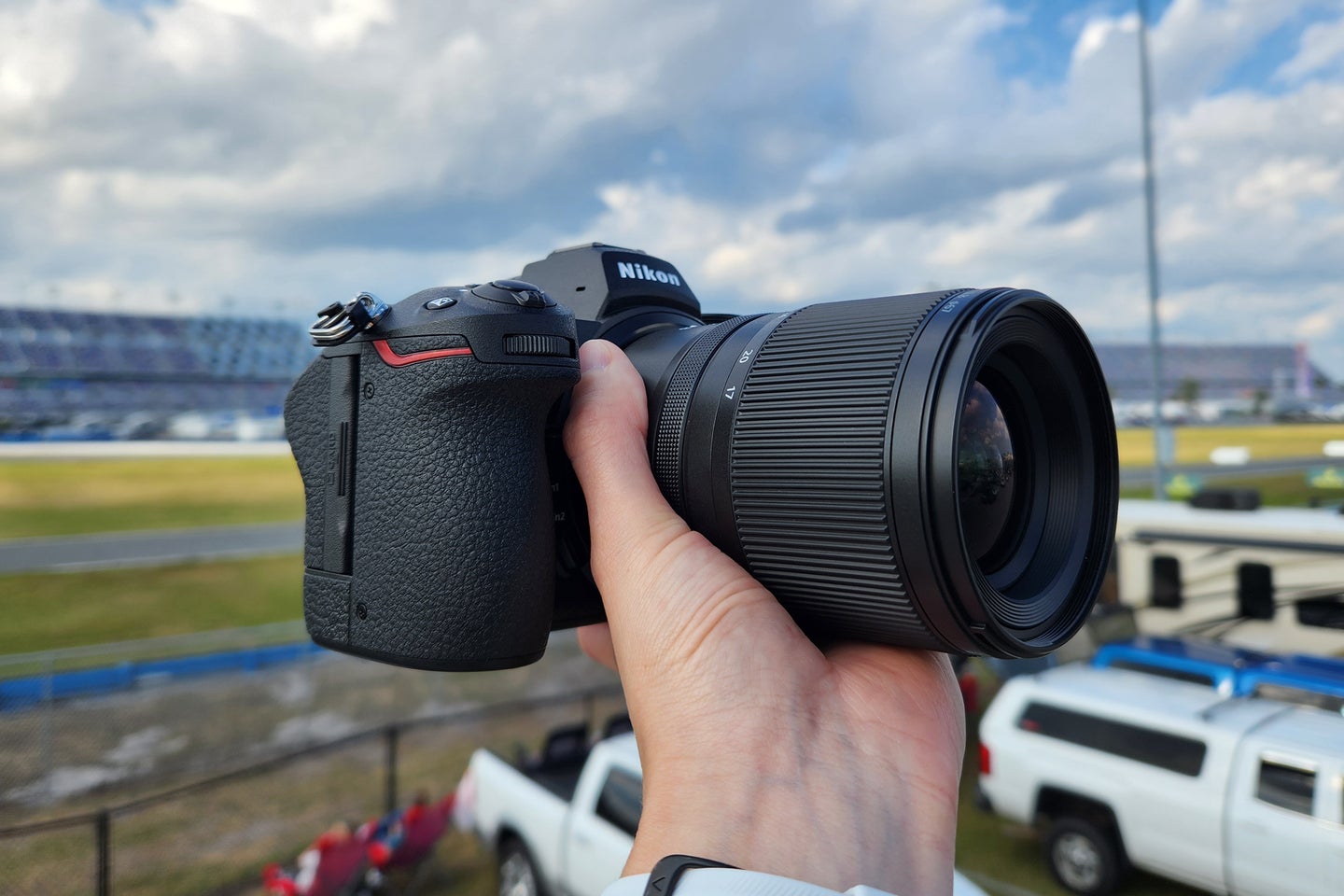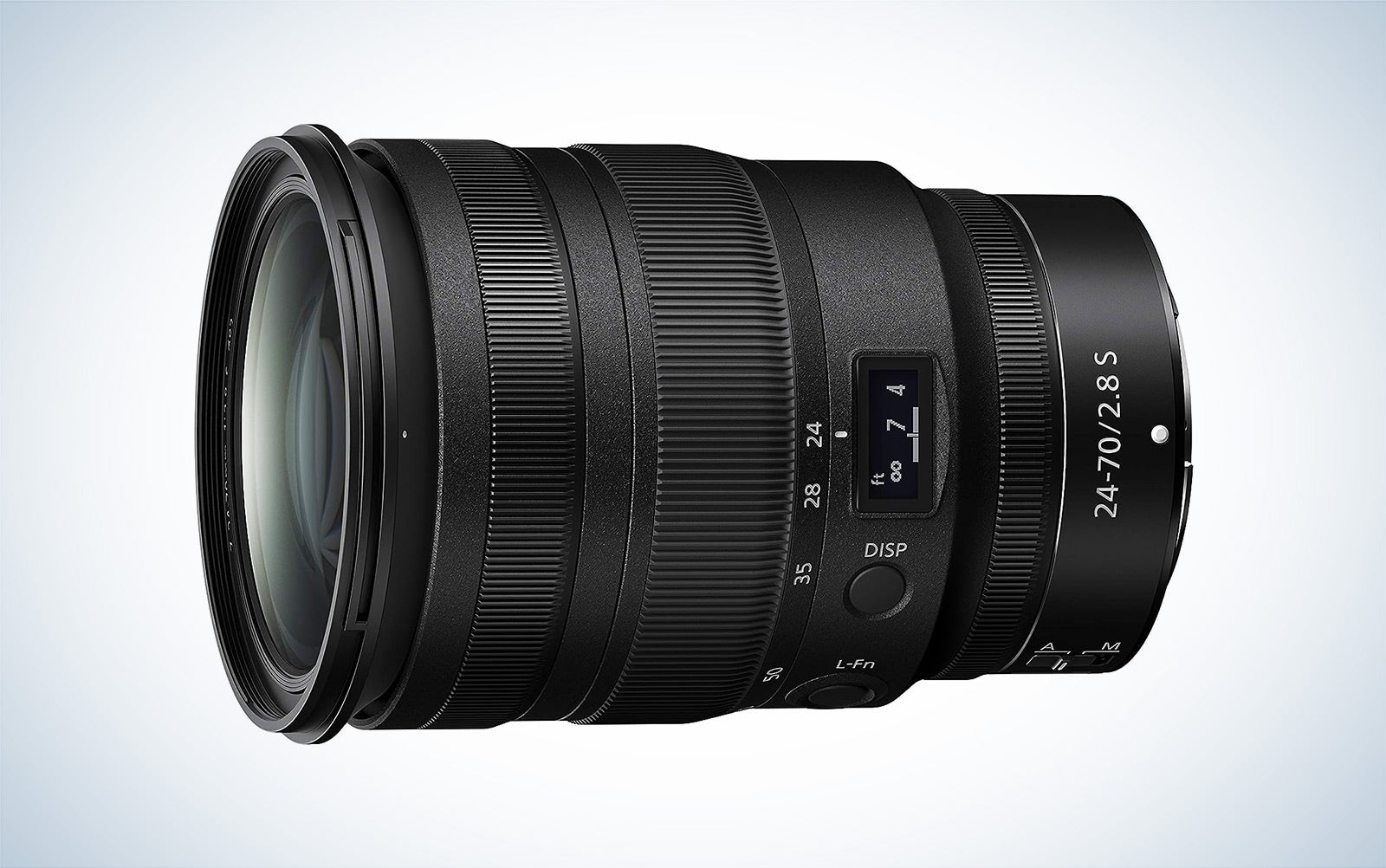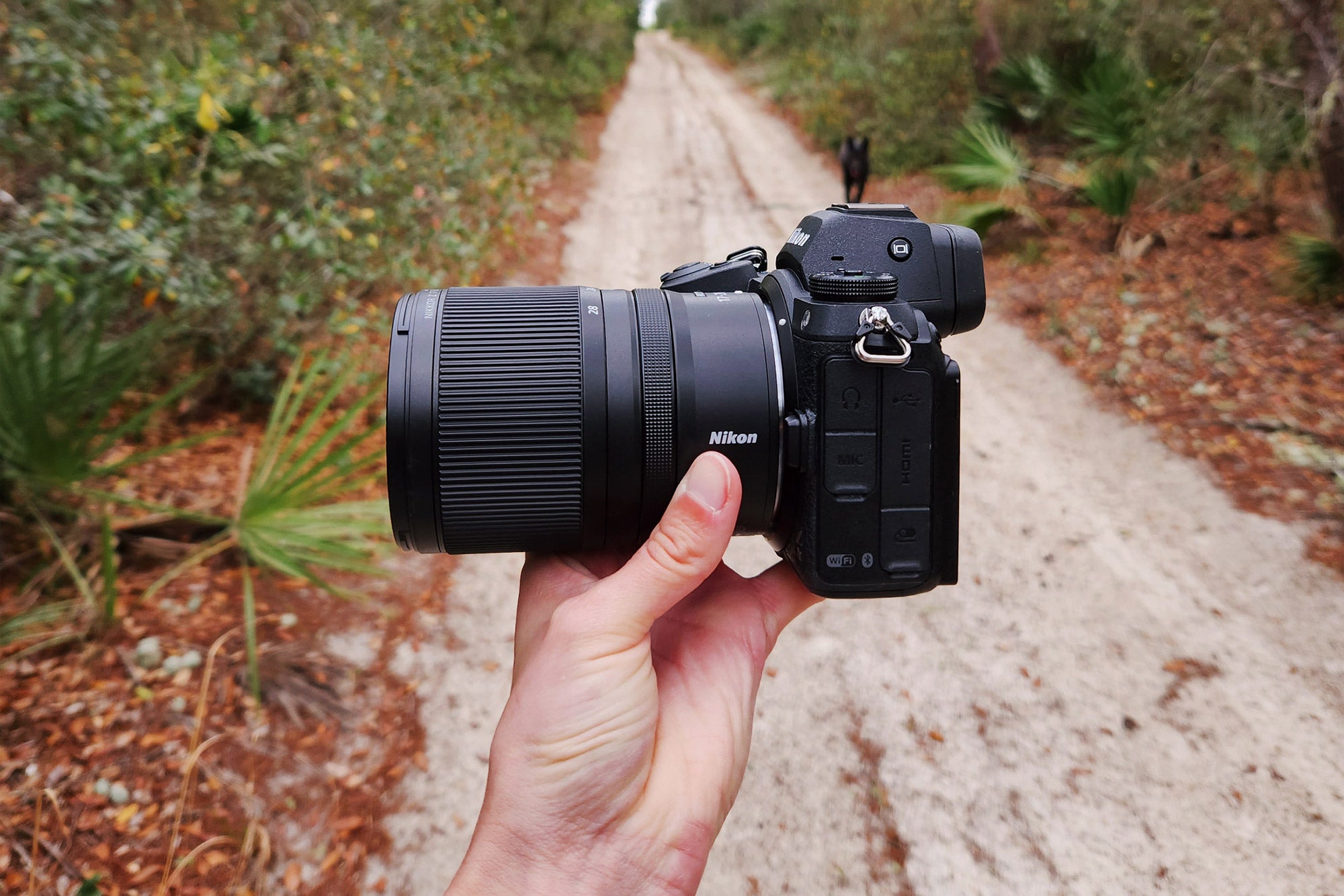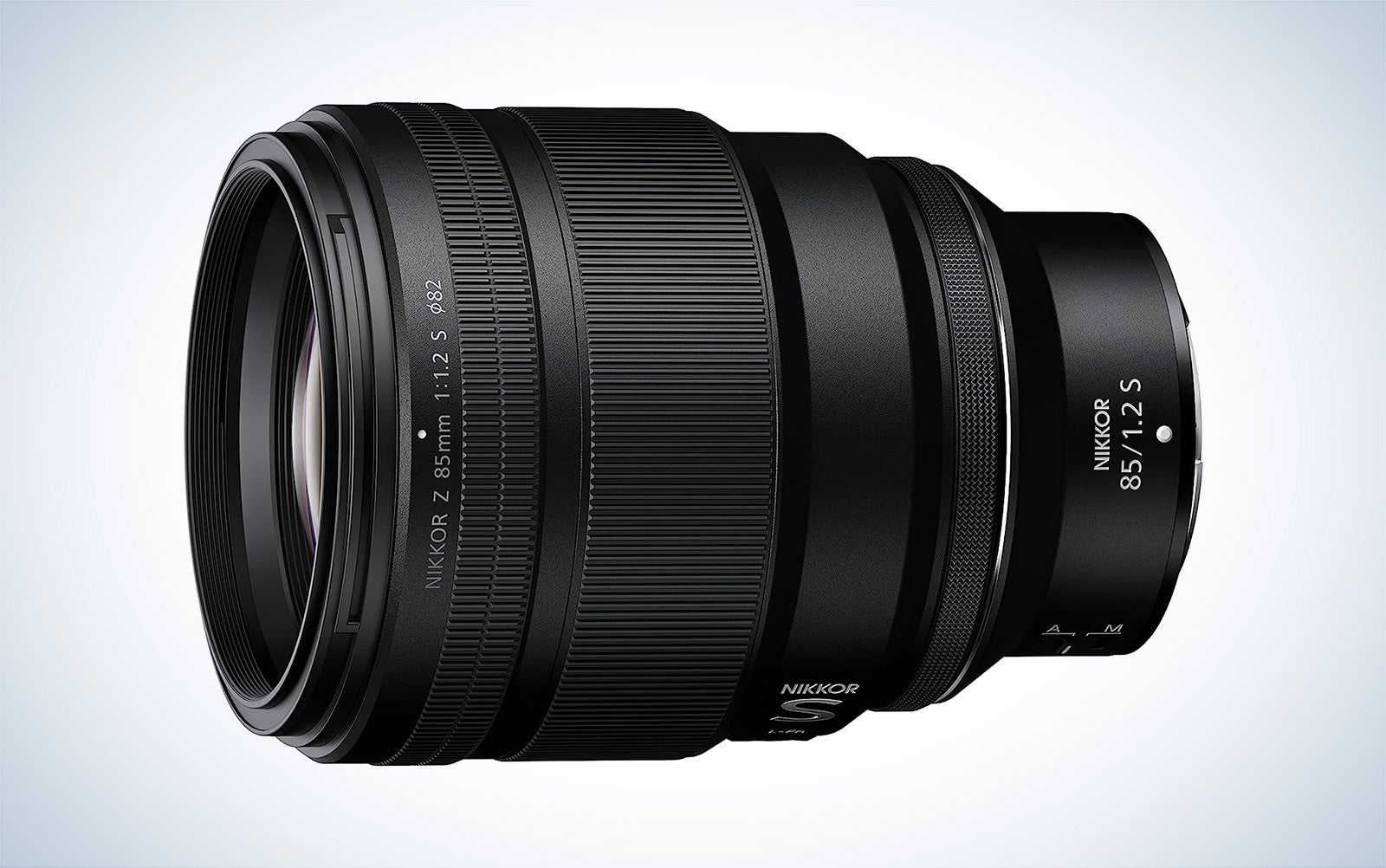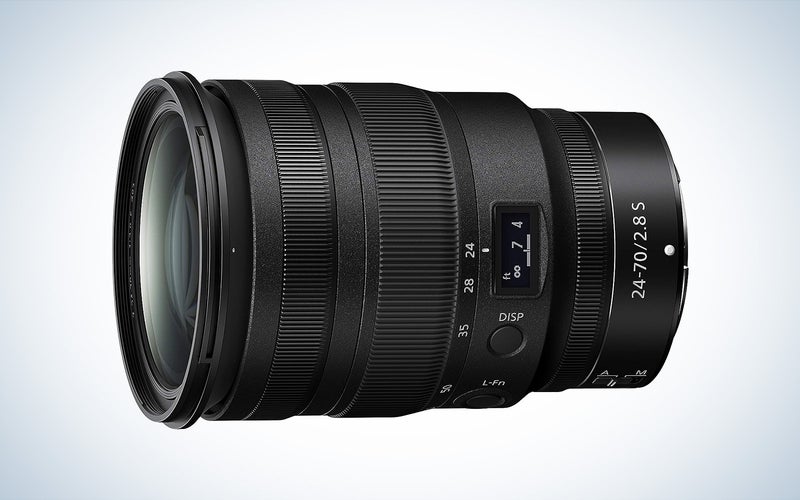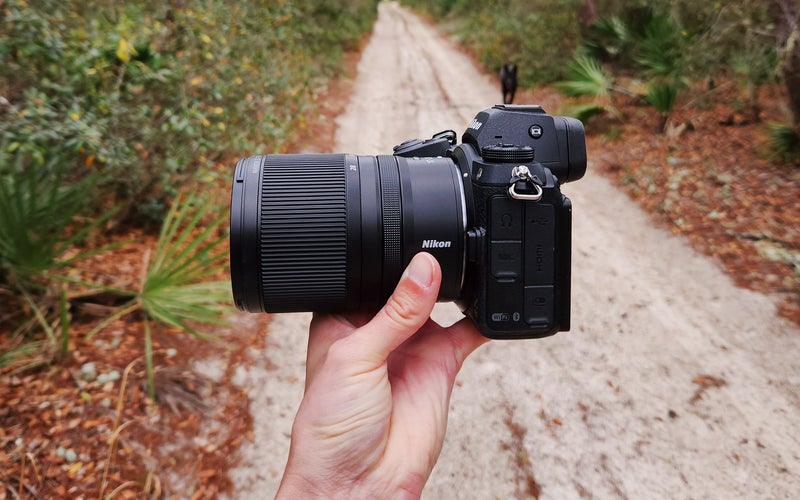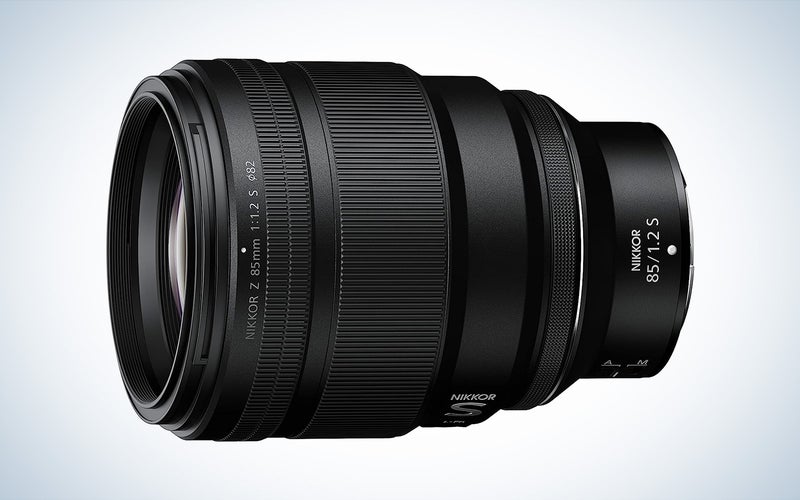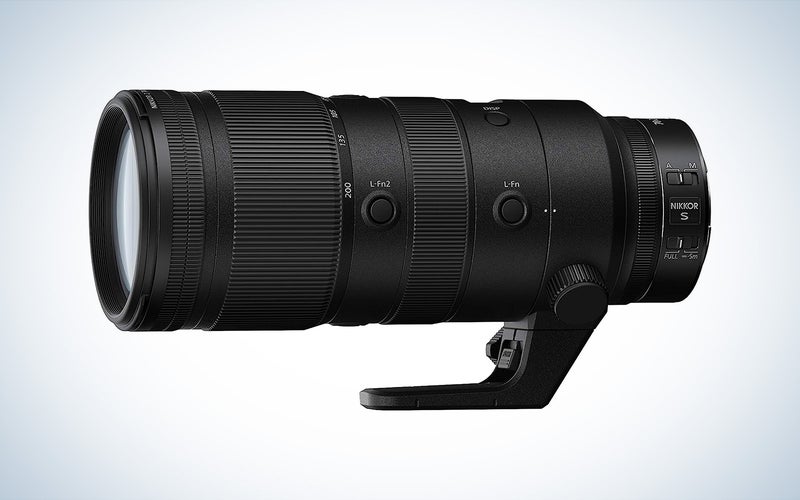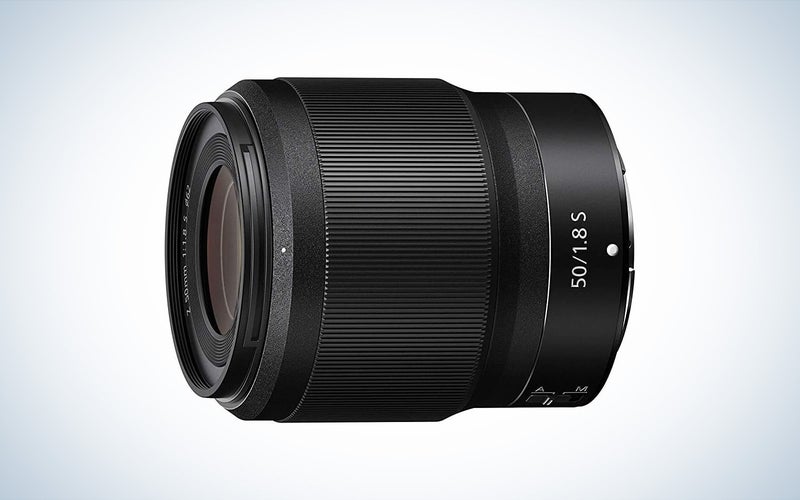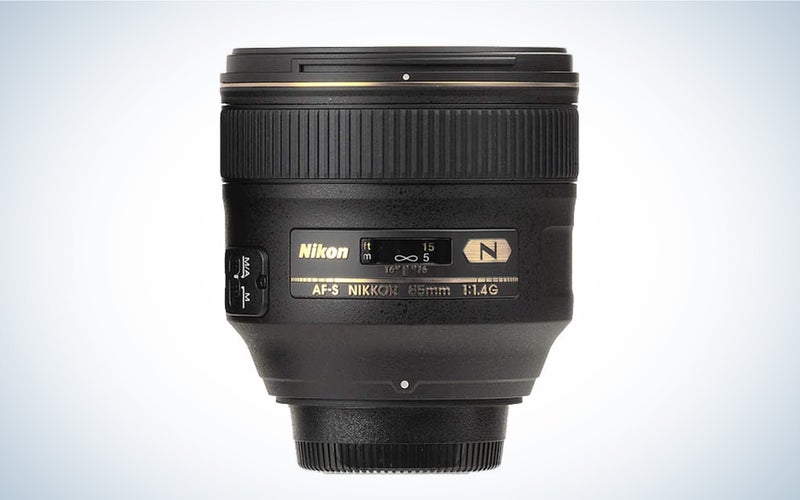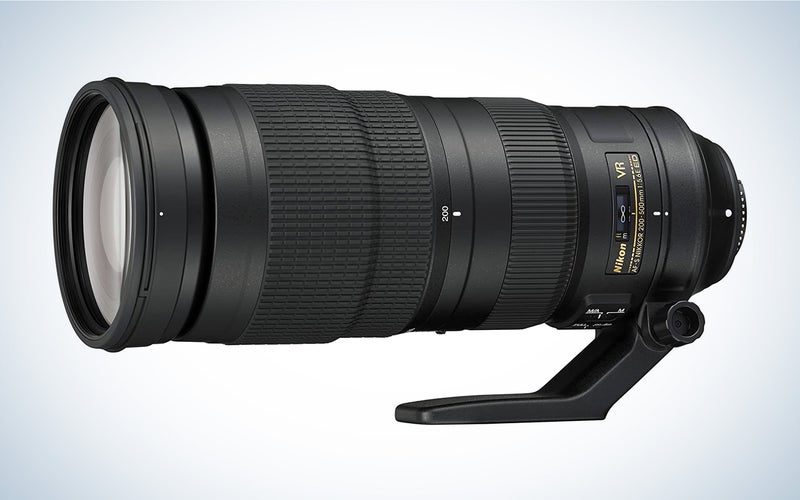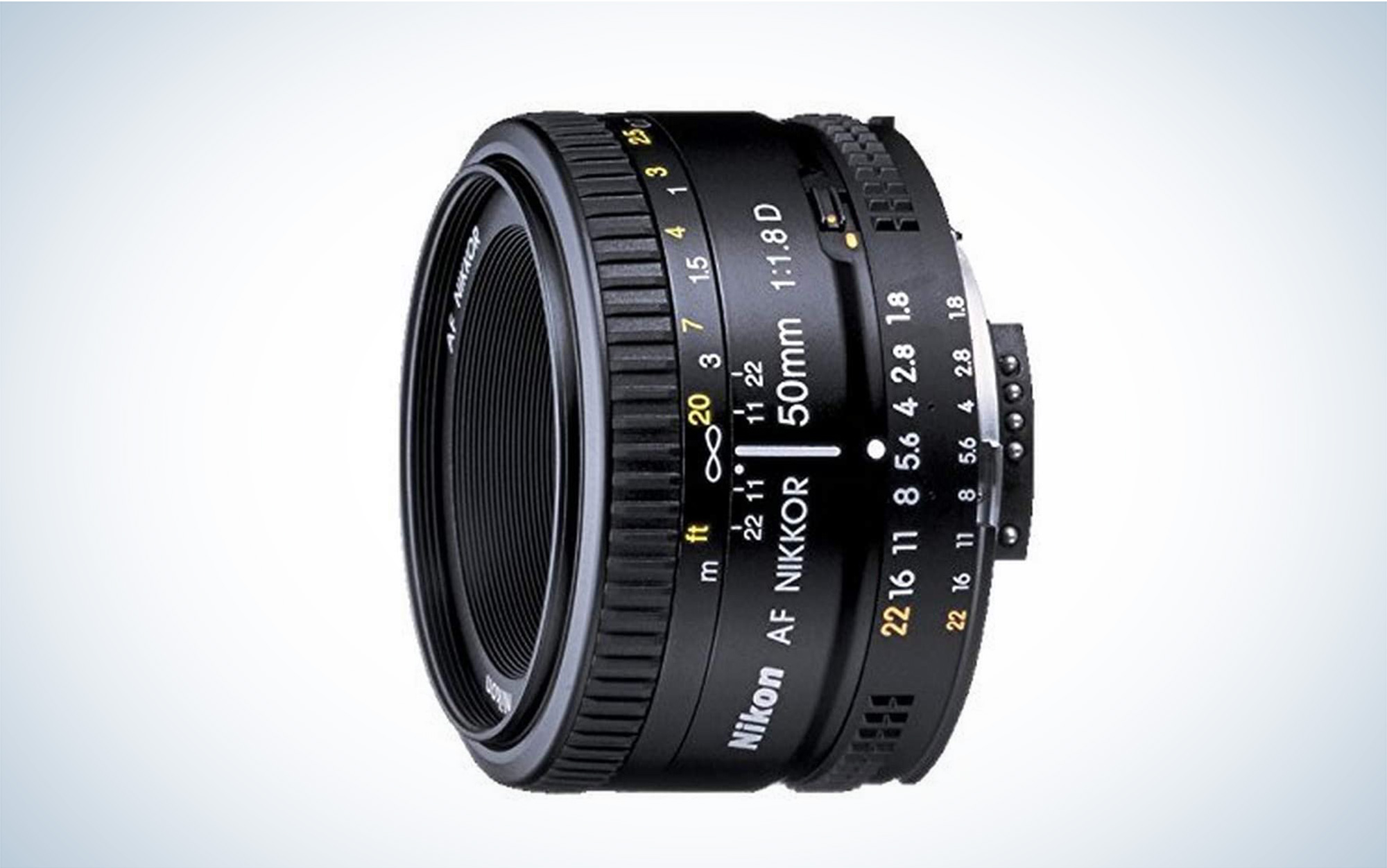We may earn revenue from the products available on this page and participate in affiliate programs. Learn more ›
Building a Nikon lens collection is a critical part of your photography journey. In some ways, adding the right lens to your kit is even more important than your choice of camera, especially if you concentrate on a particular genre of photography, such as portraits, wildlife, or street photography. The type of lens you select can make a significant difference between so-so photos and consistently excellent images. Whether you’re shooting with a full-frame DSLR, an APS-C DSLR, or a Nikon Z-series mirrorless camera, we’ll help you sort through the best Nikon lenses available.
Best Nikon mirrorless lenses
- Best overall: Nikon NIKKOR Z 24-70mm f/2.8 S
- Best wide-angle: Nikon NIKKOR Z 17-28mm f/2.8
- Best for portraits: Nikon NIKKOR Z 85mm f/1.2 S
- Best telephoto: Nikon NIKKOR Z 70-200mm f/2.8 VR S
- Best budget: Nikon NIKKOR Z 50mm f/1.8 S Lens
Best Nikon DSLR lenses
- Best F-mount lens overall: AF-S FX Nikon NIKKOR 85mm f/1.4
- Best F-mount telephoto zoom: AF-S FX NIKKOR 200-500mm f/5.6E ED VR lens
- Best budget F-mount lens: Nikon FX NIKKOR 50mm f/1.8D
How we chose the best Nikon lenses
The writers and editors at Pop Photo have decades of experience with just about every major camera and lens manufacturer, including Nikon. We have hands-on experience with most of the lenses on this list. We also factored in user and editorial reviews. Given the wide variety of Nikon lenses, we aimed to choose options for most situations and price points. Overall image quality, handling, autofocus, build quality, and lens features were all important factors when making our selections.
The best Nikon lenses: Reviews & recommendations
Nikon makes a wide array of lenses for its DSLR and mirrorless lineup. Lenses span the full spectrum of lens types and budgets, so you’re sure to find a quality Nikon lens that fits your needs.
Best overall: Nikon NIKKOR Z 24-70mm f/2.8 S
Nikon
Specs
- Lens mount: Nikon Z, full-frame
- Aperture range: f/2.8 – f/22
- Image stabilization: No
- Filter size: 82mm
- Minimum focus distance: 1.25 feet
- Weight: 1.77 pounds
- Dimensions: 3.5 x 4.96 – 6.15 inches
Pros
- Versatile zoom range
- Excellent image quality
- Lightweight and compact
- Useful OLED display
Cons
- Focus is a little slow compared to the competition
A quality 24-70mm lens is something that most photographers should have in their kits. It offers an extremely versatile focal length range that’s ideal for a vast range of situations, meaning you can switch lenses less often. And this Nikon lens is one of the best available across all brands. It offers exceptional sharpness across the zoom and aperture range, with minimal aberrations or fringing, resulting in superb image quality.
This standard zoom lens features a fast and constant f/2.8 aperture, making it ideal in low-light situations like wedding receptions or indoor family shoots. Its autofocus is slightly slower than other lenses in this class, partly because it uses two stepper motor AF actuators instead of linear focus motors. But it is accurate and quiet, and there is very limited focus breathing, making it a good option for videographers.
The lens isn’t cheap, but it is roughly the same as the mirrorless f/2.8 options from Canon and Sony. And it offers a lot in terms of quality and features. For example, the OLED display on the top is handy for checking focal length, aperture, or focus distance. Nikon built it with robust weather sealing to protect it against the elements. And it’s also the lightest 24-70mm available at the moment. If you want to save some money, Nikon also makes an excellent 24-70mm f/4 that, at $1,000, is less than half the price, albeit with a slight drop in image quality and a slower maximum aperture.
Best wide-angle: Nikon NIKKOR Z 17-28mm f/2.8
Abby Ferguson
Specs
- Lens mount: Nikon Z, full-frame
- Aperture range: f/2.8 – f/22
- Image stabilization: No
- Filter size: 67mm
- Minimum focus distance: 7.5 inches
- Weight: 15.9 ounces
- Dimensions: 3 x 4 inches
Pros
- Very compact and lightweight for the class
- Internal focus and zoom
- Can focus very close
- Good balance of quality and price
Cons
- Minimal controls on the lens body
- Control ring is hypersensitive
While this lens isn’t at the top end of Nikon’s wide-angle lineup, it is very well-balanced in regard to price and quality, which is why it earned our top wide-angle spot. It is very reasonably priced but still has a lot to offer. Weighing just under a pound and measuring four inches long, it’s extremely compact and lightweight for the class. It is one of our favorite lenses to hike with, as a result.
This wide-angle zoom lens features fully internal zoom and focus, meaning the lens doesn’t change length at all. That makes it ideal for video use, especially when using a gimbal, as you won’t need to rebalance when changing focal length. It can also focus as close as 7.5 inches, making it possible to get some unique wide-angle closeup shots.
Though this lens won’t offer the same sharpness as Nikon’s higher-end S lineup, it is plenty sharp for most people and situations. The f/2.8 aperture and rounded nine-blade diaphragm results in pleasing bokeh, especially when you get close to your subjects. And despite the ultra-wide perspective, you can use a reasonable 67mm filter on it. For the price, this lens is quite impressive.
Best for portraits: Nikon NIKKOR Z 85mm f/1.2 S
Nikon
Specs
- Lens mount: Nikon Z, full-frame
- Aperture range: f/1.2 – f/16
- Image stabilization:
- Filter size: 82mm
- Minimum focus distance: 33.46 inches
- Weight: 2.6 pounds
- Dimensions: 4 x 5.6 inches
Pros
- Superb image quality
- Fast f/1.2 aperture
- Fast and accurate autofocus
- Rugged build quality
Cons
- A bit pricey
- Bulky and heavy
An 85mm prime is the quintessential portrait lens, and this Nikon version is a premier example of one. It offers truly excellent image quality, with excellent sharpness across the image and at all apertures. But its bokeh is where it really shines. Thanks in part to the rounded 11-blade diaphragm, the bokeh is wonderfully smooth, with beautiful transition from focused and defocused areas. It contrasts the sharpness of the lens perfectly.
As a member of Nikon’s S line of lenses, this 85mm features rugged build quality with weather sealing. It offers a programmable control ring and L-Fn function button, and there is an auto/manual focus switch as well. The autofocus is speedy and reliably accurate, so it can keep up with even rapidly moving subjects like little kids.
Of course, the fast f/1.2 aperture results in a steep price tag and a lot of bulk. If you want to save $2,000 and a pound and a half of weight, the NIKKOR Z 85mm f/1.8 S is your best alternative.
Best telephoto: Nikon NIKKOR Z 70-200mm f/2.8 VR S
Nikon
Specs
- Lens mount: Nikon Z, full-frame
- Aperture range: f/2.8 – f/22
- Image stabilization: Yes
- Filter size: 77mm
- Minimum focus distance: 1.64 feet
- Weight: 2.99 pounds
- Dimensions: 3.5 x 8.66 inches
Pros
- Stunningly good image quality
- Extremely fast, quiet, and accurate autofocus
- Built-in stabilization
- Excellent handling
Cons
- Pro-level price tag
Besides a 24-70mm, a 70-200mm is one of the most versatile zoom lenses you can buy. They can cover most situations at weddings, work extremely well for motorsports and other sporting events, and are great wildlife lenses. And Nikon’s mirrorless version of this popular lens is possibly the best to have ever existed.
The NIKKOR Z 70-200mm offers truly stunning image quality. It’s extremely sharp across the zoom and aperture range. The colors and contrast are pleasing and true to life. And the bokeh is very attractive, resulting in beautiful portraits. The autofocus is very fast, accurate, and quiet, so you’ll be able to trust it even if you’re shooting a wedding ceremony in a poorly lit church.
As we would hope for a 70-200mm, it provides image stabilization to improve low-light performance. It’s built to Nikon’s S-line standards, meaning it’s dust and moisture-resistant and gets a fluorine coating on the front element. And the OLED lens information panel displays aperture setting, focus distance, and depth of field figures right on top of the lens for quick reference. Of course, it comes with a price tag to reflect all these pro features, but it is a spectacular lens for those who want the absolute best.
Best budget: Nikon NIKKOR Z 50mm f/1.8 S Lens
Nikon
Specs
- Lens mount: Nikon Z, full-frame
- Aperture range: f/1.8 – f/16
- Image stabilization: No
- Filter size: 62mm
- Minimum focus distance: 1.31 feet
- Weight: 14.64 ounces
- Dimensions: 2.99 x 3.41 inches
Pros
- Excellent overall image quality
- Very fast autofocus
- Reasonably priced
- Relatively compact and lightweight
Cons
- No fluorine coating on the front element
If you are just starting out in photography and looking for a single, relatively affordable but quality lens, you’d be hard-pressed to beat Nikon’s 50mm f/1.8 S. It isn’t the cheapest Nikon lens you can buy, but the quality you get makes this one we would recommend over less expensive options. It offers a ton of value for the relatively low price, which you simply won’t find elsewhere.
It’s as sharp as much more expensive lenses, even when shooting wide open. The bokeh is pleasing, and it results in minimal distortion, vignetting, and aberrations. The autofocus is also as fast as its more expensive peers, so you can trust it’ll keep up with fast-moving subjects. The f/1.8 aperture is fast enough for most, though if you want extra low-light performance and razor-thin focus areas, Nikon’s 50mm f/1.2 S is another option, albeit for more than twice the price.
In terms of build quality, you also get a lot for your money here. It’s weather sealed and offers a programmable control ring which you can use for a variety of camera and exposure settings. Nikon did leave out a fluorine coating on the front element, so you will want to take extra care in cleaning your lens before shoots. Finally, it’s relatively compact and lightweight, making it comfortable to keep on your camera even for long days of shooting.
If you don’t mind a slightly wider perspective and want to save $350, the NIKKOR Z 40mm f/2 is a fantastic choice.
Best F-mount lens overall: AF-S FX Nikon NIKKOR 85mm f/1.4
Nikon
Specs
- Lens mount: Nikon F, full-frame
- Aperture range: f/1.4 – f/16
- Image stabilization: No
- Filter size: 77 mm
- Minimum focus distance: 2.79 feet
- Weight: 1.31 pounds
- Dimensions: 3.39 x 3.31 inches
Pros
- Very sharp optics
- Attractive bokeh
- Relatively lightweight for the class
- Highly accurate autofocus
Cons
- Strong vignetting when wide open
The AF-S FX Nikon NIKKOR 85mm f/1.4 lens is one of the best Nikon DSLR lenses for portraits. It produces sharp-as-a-tack images. And thanks to its f/1.4 aperture, it creates beautiful bokeh that softens the background to emphasize your main subject.
The autofocus of this 85mm isn’t as fast as other lenses, but for most portrait situations, it’ll keep up just fine. And it makes up for the lack of speed in its accuracy. Plus, the lens is relatively compact and lightweight for an 85mm, so you won’t mind carrying it with you for a full day of shooting.
For budget-minded Nikon shooters, take a look at the AF-S NIKKOR 85mm f/1.8G.
Best F-mount telephoto zoom: AF-S FX NIKKOR 200-500mm f/5.6E ED VR lens
Nikon
Specs
- Lens mount: Nikon F, full-frame
- Aperture range: f/5.6 – f/32
- Image stabilization:
- Filter size: 95mm
- Minimum focus distance: 7.22 feet
- Weight: 5.07 pounds
- Dimensions: 4.25 x 10.53 – 13.5 inches
Pros
- Versatile range for sports and wildlife
- Excellent image quality across zoom range
- Reasonably priced
- Vibration reduction of up to 4.5 stops
Cons
- Not fully weather-sealed
Distant subjects are no longer out of reach with the AF-S FX NIKKOR 200-500mm f/5.6E ED VR lens. It provides an awesome zoom range, making it an ideal choice for sports and wildlife photographers. The image quality from this super-telephoto zoom lens is superb, resulting in highly detailed shots. It also offers 4.5 stops of vibration reduction to help obtain sharp images even when hand-holding the lens.
Another benefit to this lens is that it is compatible with Nikon’s teleconverters. That means that you can get up to twice the focal range for even more reach. And don’t forget, an APS-C camera adds 1.5x (or about 750mm) to the lens’ reach as well. Unfortunately, it isn’t fully weather-sealed, but it does offer a rotating tripod collar for better balance when using a tripod or monopod in either landscape or portrait orientation.
Best budget DSLR lens: Nikon FX NIKKOR 50mm f/1.8D
Nikon
Specs
- Lens mount: Nikon F, full-frame
- Aperture range: f/1.8 – f/22
- Image stabilization: No
- Filter size: 52mm
- Minimum focus distance: 1.48 feet
- Weight: 5.47 ounces
- Dimensions: 2.5 x 1.54 inches
Pros
- Tiny and lightweight
- Very affordable
- Excellent image quality
Cons
- Needs to be stopped down for the best performance
Despite its low price and compact 2.5 by 1.5-inch size, this little Nikon lens is the perfect go-to lens for a variety of scenarios. It weighs a mere 5.5 ounces, so it’s a lightweight companion, making it ideal for travel or hiking adventures. The lens provides excellent sharpness so, but it does perform best when stopped down a few stops. At f/2.8 or so, the lens performs beautifully.
One caveat, though, is that this nifty fifty only works in manual focus with older cameras without an AF motor built-in, like the Nikon D40. If you use a body with the body-mounted screw to drive autofocus, it will focus quickly and accurately. These older 50mm lenses are getting a bit hard to find these days, so if you are thinking of picking one up, you may not want to wait much longer.
Even more Nikon lenses to consider
Nikon NIKKOR Z 14-24mm f/2.8 S
Nikon’s 14-24mm f/2.8G lens for its F-mount cameras was the premier example of an ultra-wide-angle zoom lens across any brand, and this Z-mount version is even better. It is a pound lighter than the DSLR lens and features a handy OLED display. And it offers truly exceptional overall image quality with edge-to-edge sharpness. The fast f/2.8 aperture makes it an ideal choice for astrophotography, and the ultra-wide perspective with well-handled distortion is fantastic for real estate work.
Nikon NIKKOR Z 600mm f/4 TC VR S
For professional wildlife and sports photographers, you can’t beat Nikon’s 600mm lens. It offers a bright f/4 aperture, stunning image quality, fast autofocus, and five stops of vibration reduction. But perhaps the most unique feature is the built-in 1.4x teleconverter. With a simple flip of a switch, you’ll get 840mm reach. And since the teleconverter is integrated into the lens, it maintains the weather sealing as well as image quality. Nikon also makes a 400mm version with a built-in 1.4x teleconverter, resulting in a reach of 560mm, should you want something a little less dramatic.
What to consider when buying the best Nikon lenses
Nikon has an extremely expansive list of lenses, especially when you are looking at both F-mount and Z-mount options. Choosing a lens can be challenging as a result, but careful consideration of the items below will help you find the best Nikon lens for your needs.
Focal length
The first step to making any lens decision is narrowing down what focal length you need or want. To put it simply, focal length determines how much you see (angle of view) and how large things appear (magnification). A telephoto lens, which has a narrow angle of view and high magnification, won’t work for real estate photography. On the other hand, a wide-angle lens, with its wide view and low magnification, isn’t ideal for most portrait and wildlife situations. As a result, it’s important to consider the types of images you want to create before choosing a focal length.
The other piece of the focal length puzzle is if you use an APS-C or full-frame camera. Focal lengths are listed in reference to their use on full-frame cameras. However, lenses used on APS-C cameras will result in a narrower angle of view due to the camera’s crop factor. Because of this, you will need to take that into account when buying a lens for your APS-C camera. For example, if you want a wide-angle lens, you will need to go extra wide in order to actually have that wide angle of view on a crop sensor camera.
Prime versus zoom
Once you know the focal length you want, you can decide if a prime or zoom lens is better for your needs. A prime lens offers a single focal length, while a zoom lens offers a range of focal lengths. Which is best mostly comes down to personal preference and your shooting style, but there are advantages and disadvantages to both.
Prime lenses are typically higher in quality and can offer faster maximum apertures. They can also be more affordable. But they aren’t as versatile since you’ll need to be able to physically move or switch lenses to change the perspective. Zoom lenses are more convenient since you can simply zoom in or out to change the view. But the quality is typically slightly lower than prime lenses, and they can get very expensive.
Aperture
The maximum aperture of a lens is provided right in the name of the lens and is important for a few reasons. First, a wider aperture will let in more light, making it better in low-light conditions. Wedding photographers, astrophotographers, or anyone shooting indoors or in dark situations will want to prioritize a wide (also called fast) maximum aperture. Second, aperture is one factor in determining depth of field. If you want a shallow depth of field for greater separation of your subject and background, be sure to choose a lens with a wide maximum aperture.
Some zoom lenses will feature a variable maximum aperture, such as f/4.5-5.6. This means that as you zoom in, you will get a smaller aperture and lose light. That can get frustrating when shooting in low light conditions or trying to achieve a shallow depth of field. You’ll have to pay more for a lens with a constant maximum aperture, but it may be worth it for you.
Size
Lens size can be an especially important factor if you plan to travel or hike with the lens or if you have long shooting days, such as weddings. Lugging around a bulky piece of glass is not very fun if you aren’t prepared for it. Nikon makes some excellent compact and lightweight options of popular focal lengths or zoom ranges, so be sure to check the size closely if that is something that is important to you.
FAQs
Q: What is Nikon’s sharpest lens?
Nikon’s NIKKOR Z 85mm f/1.2 S is typically regarded as the company’s sharpest lens. It offers superb sharpness even when shooting wide open and across the entire image. And despite the extreme sharpness, it also offers beautifully smooth bokeh.
Q: Are Nikon VR lenses worth it?
The short answer is yes, Nikon VR lenses are worth the extra money. The long answer is, it depends. In some cases, Nikon’s VR can make all the difference in whether or not you get the shot. This is especially true when handholding telephoto lenses when the extended focal length makes it difficult to keep the lens steady enough to get a sharp image without a tripod. And, if you’re shooting in low light and can’t achieve a good exposure with a handholdable shutter speed, VR can compensate for camera shake resulting from a slow shutter speed.
Q: Why are Nikon lenses so expensive?
The truth is Nikon lenses aren’t any more expensive than comparable native lenses from other camera manufacturers. Perhaps even more important is the fact that Nikon offers a variety of lenses in different price categories. The more affordable lenses tend to be DX format, given that Nikon’s APS-C cameras are also priced more reasonably than full-frame cameras or FX lenses.
While third-party lenses for Nikon cameras are generally priced lower than their native Nikon equivalents, many people prefer to stick with the latter. These native lenses are designed to work with Nikon cameras and may deliver better results than those from third-party lens companies.
Final thoughts on the best Nikon lenses
Best Nikon mirrorless lenses
- Best overall: Nikon NIKKOR Z 24-70mm f/2.8 S
- Best wide-angle: Nikon NIKKOR Z 17-28mm f/2.8
- Best for portraits: Nikon NIKKOR Z 85mm f/1.2 S
- Best telephoto: Nikon NIKKOR Z 70-200mm f/2.8 VR S
- Best budget: Nikon NIKKOR Z 50mm f/1.8 S Lens
Best Nikon DSLR lenses
- Best F-mount lens overall: AF-S FX Nikon NIKKOR 85mm f/1.4
- Best F-mount telephoto zoom: AF-S FX NIKKOR 200-500mm f/5.6E ED VR lens
- Best budget F-mount lens: Nikon FX NIKKOR 50mm f/1.8D
Nikon makes lenses for just about every situation, from portraits to wildlife to real estate. It also makes lenses at a range of price points. Though the best lens comes down to what you want to shoot and your budget, chances are good that you will be able to find a Nikon lens that is suitable for your needs.
Why trust us
PopPhoto has a long history of delivering the opinions of some of the sharpest and most prolific camera dorks the world has to offer. Since 1937, we’ve been reviewing cameras, providing wisdom from well-known photographers, and generally just nerding out about all that goes into making great pictures. Our current crop of writers and editors have decades of professional photography and camera writing experience among them. Collectively, we’ve probably shot with just about every camera and lens combo you can imagine—as well as some obscure stuff you may not even know about. Remember the Casio Tryx folding camera? PopPhoto does.
We also get that buying a camera is a big decision, which is why we’re dedicated to helping folks choose the right one (or, in our case “ones”) for their needs. Case in point: Handing over top dollar for an expensive rig may leave you unsatisfied if it doesn’t fit your preferred shooting style. Sure, a $6,000 sports-oriented DSLR can capture landscapes, but do you really need to do it at 30 frames-per-second? No, you don’t.
